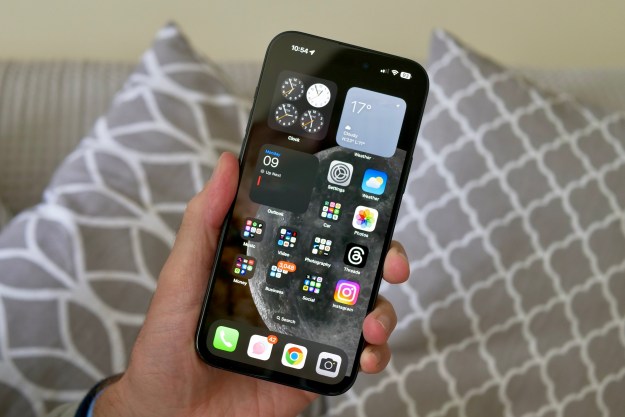
One of the more unique features that’s been in iOS for a couple of generations now is Live Photos. A Live Photo is essentially a short video, capturing more of the moment than a single frame. With iOS 11, Live Photos will become significantly more flexible, potentially changing how iPhone owners use them. Users will be able to select a new keyframe from anywhere within the Live Photo, which could be incredibly helpful for shooting things like sports, pets, or kids. Additionally, iOS 11 users can trim the length of the Live Photo to change the total duration, or save it as an autoplaying video loop or a Boomerang-style “bounce.” It will also be possible to save long exposure photos similar to shooting with a slow shutter speed on a DSLR camera.
Apple also promises more creative control over the look of iPhone photos thanks to new professional-quality filters built into the camera app. Users can select a filter for a variety of effects, from making skin tones more natural to applying classic looks to portraits.

When it comes to viewing your photos and videos, iOS 11 also includes a revamped Memories feature. Currently, the auto-generated slideshows that appear in Memories are formatted to be viewed in landscape orientation only, with any portrait-orientation content displaying in a cropped or downscaled format. With iOS 11, playing back Memories slideshows will automatically adjust to fill the screen regardless of how you hold your device, which should make for a more natural and better-looking experience.
Additionally, developers will soon be able to take advantage of the dual-camera Portrait mode on the iPhone 7 Plus with a new Depth API. Third-party apps will be able to implement the same depth-sensing capabilities that Apple uses in the default iOS camera app to simulate a shallow depth of field.
IOS 11 also introduces some under-the-hood technology updates that will help optimize a device’s storage and data usage. Apple is moving from standard JPEG compression for its still images to a new file format it’s calling HEIF, for High Efficiency Image Format. Apple claims HEIF offers twice the compression effectiveness of JPEG but will still be fully shareable, which saves space on a user’s device and iCloud storage, shortens the time it takes to share an image, and uses less data when doing so.
Video files will receive a similar treatment, thanks to the new HEVC codec. This is especially important given the high-resolution 4K videos that iPhones now shoot, and could potentially save a lot of storage space for users who shoot video frequently.
A developer preview of iOS 11 is available today, with the public release planned for sometime in fall 2017.
Updated June 5, 2017 to include additional details from Apple’s iOS 11 preview page.
Editors' Recommendations
- Are you having iPhone alarm problems? A fix is coming soon
- Nomad’s new iPhone case and Apple Watch band may be its coolest yet
- Here’s how Apple could change your iPhone forever
- This one thing could make iOS 18 the best iPhone update in years
- When will Apple release iOS 18? Here’s what we know




